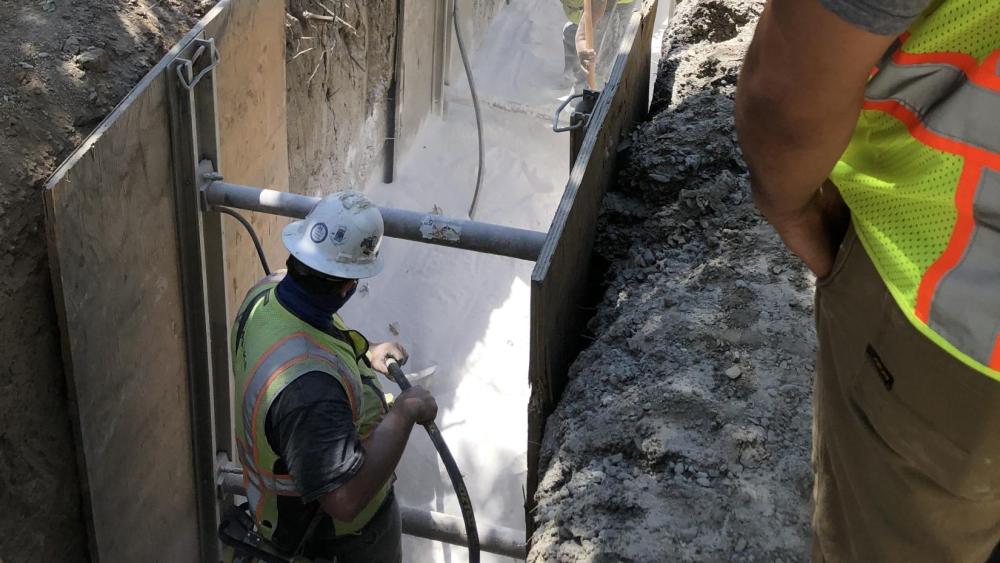The Big Shift is providing the infrastructure for a more sustainable way to heat campus — a task easier said than done. Installing hot water pipes requires several phases of construction, and with miles of pipe to install, a lot of work is being done to accomplish this crucial shift to hot water-based heating. Find out about the phases of construction below.
Safety
During this phase, pedestrian and vehicular detour signage is placed and fencing is put up around the construction area.
Impact: pedestrian and vehicle detours, low noise level
Trench
During this phase, construction crews saw cut and demolish portions of the asphalt/pavement and excavate and shore trenches.
Impact: medium noise level, some saw cutting asphalt and occasional jackhammering
Pipeline Fabrication and Placement
Once trenches have been dug, it's time to place the new hot water pipes. Construction crews fuse the portions of the pipes together then place them into the trench. Pipes are also pressure testing during this phase.
Impact: medium noise level
Insulate and Backfill
After pipes have been placed and tested, construction crews place Gilsulate powder in the trenches to insulate the pipes. The trenches are then backfilled.
Impact: medium noise level
Surface Restoration
Temporary: Backfilled trenches are repaved with an intermediary solution prior to final surface restoration.
Final: Following the main phases of construction, crews will go back to restore the affected area including a full restoration of the surface and any other impacted areas.
Impact: medium to high noise level, occasional jackhammering
Fences come down
The bulk of construction is complete and the fences surrounding the construction area can come down.
Impact: low noise level





